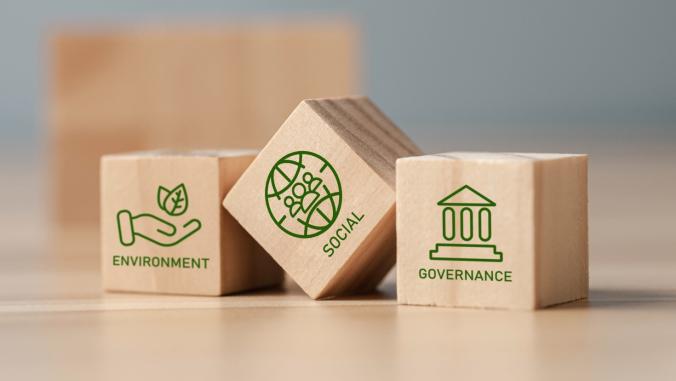Minneapolis's citizen-centric approach to climate action
Amid growing climate impacts, the City of Lakes is fighting back with a citizen-backed action strategy.

With average winter temperatures of just over 15 degrees Fahrenheit, you might think Minneapolis could use a little warming. But even this metropolis is feeling the effects of a changing climate — primarily in the form of increased flooding and extreme heat and humidity.
In July, the National Weather Service issued an excessive heat warning for much of Minnesota, with temperatures forecasted to reach anywhere from 105 to 110 degrees. While the city historically has had hot and muggy summers, there is an unmistakable upward swing toward more frequent and higher extremes.
"We know that our temperatures are rising; we’re going to be experiencing more hot days but also more extreme humidity days, which tend to be a major driver of our extreme heat events," Kelly Muellman, sustainability program coordinator at the city of Minneapolis, told GreenBiz.
And it’s not just Minneapolis dealing with extreme heat — some 14 of the 15 hottest years have occurred since 2000, as heat waves have become more frequent, more intense and longer lasting. Three of every four daily heat extremes can be tied to global warming, according to a study in the journal Nature Climate Change.
Meanwhile, Minnesota has been battered by a significant uptick in severe flooding. Even as the city sweltered in July, severe thunderstorms brought heavy rains and damaging winds of up to 80 miles per hour, which snapped trees, knocked out power and caused flooding in low-lying areas.
"With flooding we see that there’s going to be a change in the character precipitation in the state… not necessarily getting more rain overall but the rainfall patterns will change," Muellman said. "There will be more extreme rain events, less frequently. We might have a major storm, get a huge dump of rain, and then there could be a period of time when we don’t have any rain."
Mixed progress on mitigation
While Minneapolis may just now begin to feel the effects of climate change, it has been working on mitigation for nearly three decades. In 1989 it joined the city of Saint Paul in an effort to become among the first cities in the world to develop comprehensive plans to reduce greenhouse gas emissions.
In 2012, Minneapolis set a target to reduce citywide greenhouse gas emissions by 15 percent by 2015 and 30 percent by 2025 using 2006 as a baseline. Progress on this front has been slow: in 2014, Minnesota’s emissions actually increased slightly due to a spike in natural gas usage tied to an unusually cold winter. Commendably, the city is transparent in its progress or lack thereof, publicly disclosing citywide emissions each year.
One of the most notable aspects of Minnesota’s modus operandi is that it’s not afraid to report failure in its sustainability and resilience efforts. Gayle Prest, director of the Minneapolis Sustainability Office, described to GreenBiz the spirit of sustainability there: "The mayor and I had an agreement that I could deliver bad news and he couldn’t fire me."
A citizen-backed climate action plan
As outlined in its 2013 Climate Action Plan, Minneapolis’s mitigation and adaptation strategy focuses on three areas: buildings and energy; transportation and land use; and waste and recycling.
Like many other cities pursuing climate resilience initiatives, Minneapolis understood the importance of securing community buy-in. That’s why the city consulted its citizens before creating and implementing the climate action plan.
"In the early 2000s, we had a community stakeholder process to decide 'what does sustainability really mean to us,'" said Prest. "We then came up with some topic areas with the community and worked with staff on how we were going to measure it.
"We had lots of different stakeholder groups that included city staff and other agency staff, along with the public, so that everybody could be in the same room talking about the issues together."
The final plan set goals for significantly improving the energy efficiency of commercial, residential and public buildings; reducing vehicle miles traveled in Minneapolis while improving accessibility and building more walkable neighborhoods; and shrinking the city’s waste stream by reducing waste, encouraging reuse and increasing recycling of both organic and inorganic material.
Eco-districts tackle climate inequity
In recognition of the fact that not all neighborhoods are equal — some face unique social, economic and environmental challenges — Minneapolis has made the establishment of so-called "Green Zones" a pillar of its climate action plan.
"It’s taking an environmental justice approach to sustainability, and thinking about how our programs and resources can be distributed in an equitable instead of an equal way," said Muellman. "With the Green Zone, you would identify areas of the city that might currently be overburdened with pollution or have more challenging socioeconomic conditions and designate those as Green Zones and figure out what to do in those areas."
The city has created a stakeholder working group comprising city government staff and community members to establish Green Zone goals, criteria for identifying the zones and strategies and activities for them. Minneapolis expects its Green Zone initiatives to get off the ground by next year.
The City of Lakes gets busy on climate action
For Minneapolis, there seems to be no rest for the weary. In 2013, it adopted an ordinance requiring commercial buildings 50,000 square feet and over and city-owned buildings 25,000 square feet and over to annually benchmark their energy consumption and report it to the city. This is meant to allow building owners and the city government to track energy and water usage year-to-year to determine opportunities for improvement, recognize high performers and determine progress towards the climate action plan’s goals.
In 2014, Minneapolis was one of 16 communities chosen as a Climate Action Champion by the White House and U.S. Department of Energy. The city won for its commitment to clean energy, such as for leveraging its energy utility franchise agreements and the first-of-its-kind city-utility Clean Energy Partnership.
And in 2015, Mayor Betsy Hodges signed the Compact of Mayors, the world’s largest cooperative effort among mayors and city officials to reduce greenhouse gas emissions, track progress and prepare for climate change impacts. Meanwhile, Minneapolis joined as one of 17 cities across nine nations that have launched the Carbon Neutral Cities Alliance, a collaboration committed to reducing greenhouse gas pollution by 80 percent or more by 2050 or sooner.
Earlier in 2016, Minneapolis was selected to join the 100 Resilient Cities effort pioneered by the Rockefeller Foundation, a global network focused on building urban resilience. As a member of 100RC, Minneapolis will gain access to tools, funding, technical expertise and other resources to promote resilience to climate change impacts.
As far as climate action goes, Minneapolis has a lot lined up and a long way to go. But with a plan empowered by a public consensus and the strength of transparency, the City of Lakes may yet see a more sustainable and resilient future.





